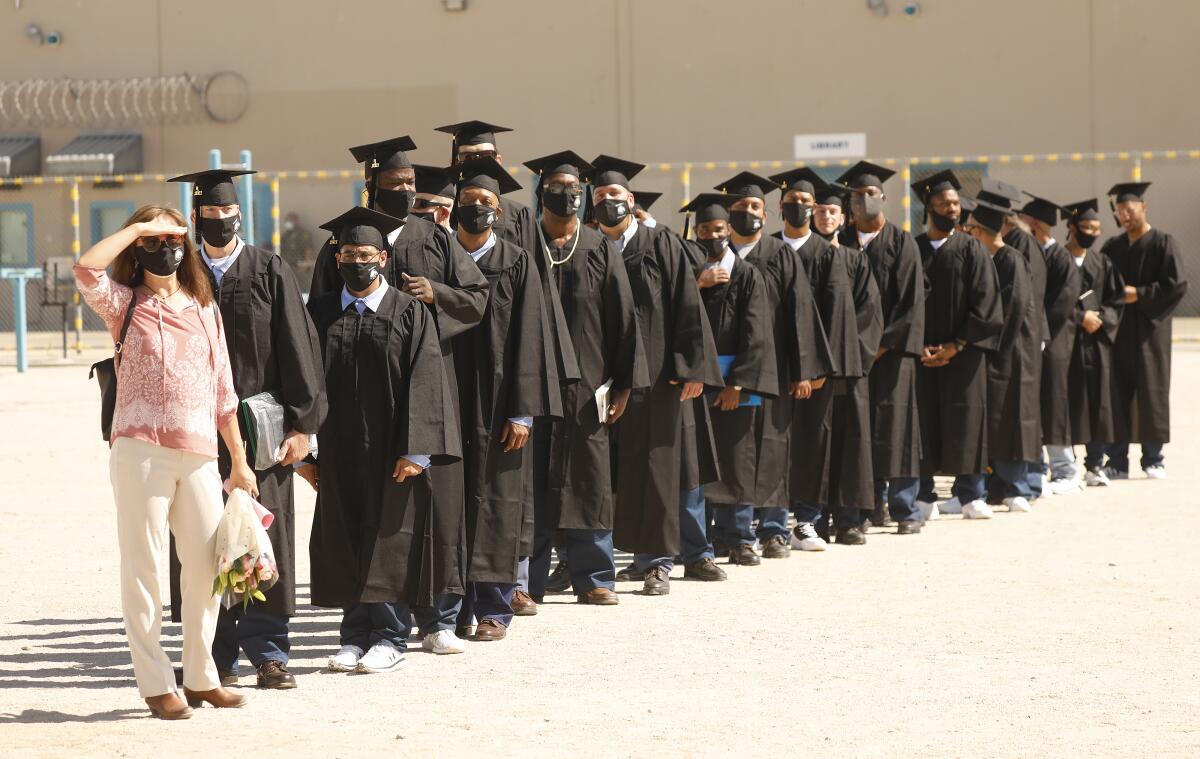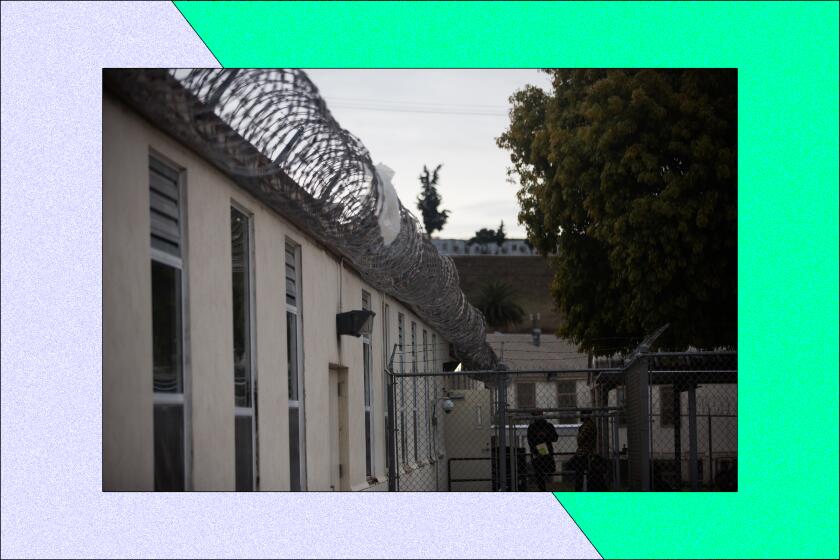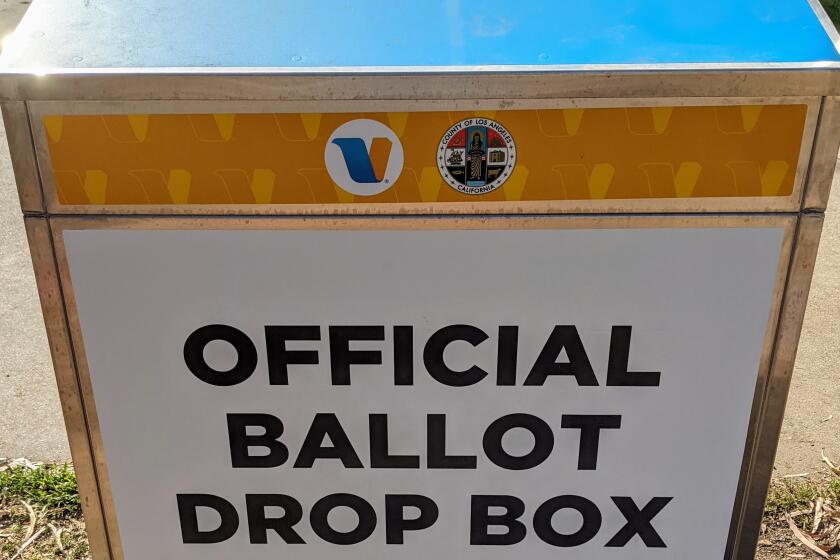Editorial: For former prisoners to have a shot at a normal life, we need successful reentry programs

Coming home from prison can be as scary as staying inside. In fact it can be worse, especially for people without a supportive family to offer housing and meals, and to assist in finding employment, medical care and other services. A state should meet the immediate material needs of people returning to society after prison, both because it is the moral thing to do and because doing so protects the rest of us by directing the “reentry” population toward help and away from further criminal activity.
In California, and in Los Angeles County in particular, those needs have not been sufficiently met, despite the heroic efforts of a number of nonprofit service providers, each with expertise in particular services such as housing, job training or medical treatment, or with peer and professional support for coping with the disorienting experience of returning to nonregimented lives.
Just as it’s in our collective best interests to ensure that former prisoners are connected with services, it’s to Californians’ benefit that those service providers get the resources they need to continue their work. Many of them have been on a wild and hazardous ride over the last 20 years, surviving first on (too little) funding through contracts with counties, then, after a major shift in incarceration and reentry policy a decade ago, funding (again, too little) through a more formalized program that gives sheriff’s and probation departments purview over distribution of state money that is now “realigned” to counties for dealing with former felons.
In the early months of the pandemic, thousands of Californians were released from prison to prevent the spread of COVID-19, but when they came home they found few providers ready to serve them, in part because they, like others, were shuttered by lockdowns. Gov. Gavin Newsom quickly shifted reentry service providers into the “essential” category and then created, along with the Chan-Zuckerberg Initiative and other funders and partners, the Returning Home Well program to see that housing, healthcare and other needs are met.
Like the American dream, the California dream of fresh starts and fair play is undermined by rules that protect privilege and punish poverty.
That program continues today, and should become permanent, because people will continue coming home from prison long after the pandemic is over.
But there are still missing pieces. The organizations that ultimately get the taxpayers’ money and provide the services have long been left out of the policymaking process, even though they are the ones with the expertise in what works on the ground, which regulations are appropriate and which are pointless and excessive (do they really have to provide drug tests every week just to provide housing and other services that keep people off the street?) and how to keep their clients from falling off the radar.
Government surely has a crucial role, like evaluating its contractors’ performance. But we’d all benefit from a more cohesive reentry service provider voice. It’s good news, then, that the Re-Entry Providers Association of California launches this week to lobby Sacramento for policies that help them help returning Californians.
Yet even then, California will be only beginning to address the needs of those who are caught up in the justice system. The first step in keeping someone released from prison off the street and out of a tent may well be to direct that person to a nonprofit housing provider, and that’s great.
Measure J was ruled unconstitutional, but the county can still spend 10% of its budget on social services and jail diversion programs.
But we’re still not done. If that person cannot later move up from subsidized housing and get a lease on his (the vast majority of people in prison are male, although the female population is growing fast) own, because landlords are permitted to deny housing to people with criminal records, he has never fully reentered society.
If he’s stuck forever in an entry-level job, because his record prevents better employment; if he can’t coach his kid’s soccer team; or be accepted to graduate school despite acing his exams; or get a professional license despite being proficient at the work; then he hasn’t actually reentered. If so, our assurance to ourselves that criminal sentences are finite and that we will be safer once former felons reintegrate into our society, our economy and our culture — all are broken promises.
We’re left with a class of hundreds of thousands of people relegated to post-conviction poverty, which affects long-term health, shortens lifespans and is visited even on the next generation of children, who must live their lives in poorer areas and with fewer choices because of an awful mistake their parent made years before. These are things we still have to work on.
Paying one’s debt to society for committing a serious crime is one thing. Having to pay at a usurious rate, in perpetuity, yet remaining forever in debt, is something far more nefarious, and its name is not “justice.”
More to Read
A cure for the common opinion
Get thought-provoking perspectives with our weekly newsletter.
You may occasionally receive promotional content from the Los Angeles Times.












